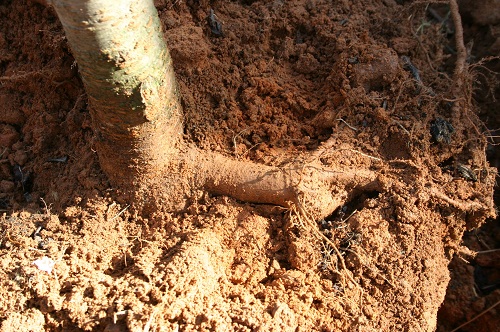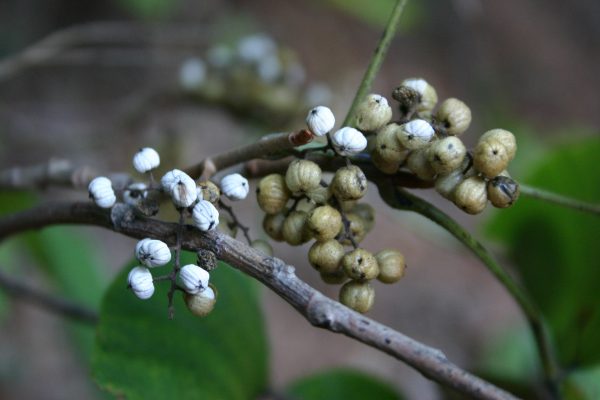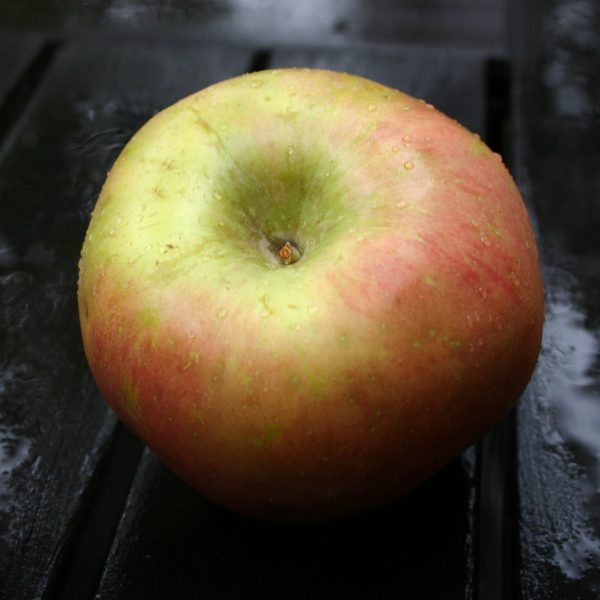Trees – Planting Correctly

It is said that when you plant a tree you give a gift to future generations. Fall is an excellent time to plant trees in your landscape. The soil is warm, so roots are encouraged to rapidly elongate. Days are a bit cooler, so you are encouraged to get out and do some physical labor.
A tree, though, is more permanent than a pansy. You can’t easily remove it if it doesn’t grow strongly in upcoming years. It makes sense to learn how to plant a tree correctly so future generations will praise rather than curse you.
THE PLANTING HOLE IS NOT A “HOLE” Although most illustrations and directions call for digging a “hole” to plant a tree, you may not need a “hole” at all!
Determine where you want to plant your tree. Insert your shovel in this spot as deeply as it will go and turn over a clump of soil. Insert the shovel three inches away from your first effort and heave the earth up once again. Proceeding around the original hole in a spiral, continue to insert the shovel as deeply as you can and turn over the resulting clumps of dirt. Stop when the loosened planting area is at least 6 feet in diameter. In the center, where you did your original spadework, excavate a hole only twice as big as the root ball of the tree you’re planting.
SOIL AMENDMENTS? NO! Significant research on tree planting has been done in the last twenty years. Scientists have tested whether organic matter added to the planting area makes any difference in the health of the tree. They’ve determined that adding organic matter to the planting hole makes little difference except in sandy soils. In fact, if amendments are added to clay soil, the tree roots may decide to remain within the fertile planting hole (where they are vulnerable to drought) and never explore the surrounding earth. Roots will always move into soil that contains lots of oxygen, so the best recommendation is to dig a wide (rather than deep) planting area, pulverizing the soil thoroughly.
ADD LIME AND PHOSPHORUS Roots need lots of calcium and phosphorus to grow well. But spreading lime and fertilizer on top of the soil after a tree is planted is futile, because the nutrients dissolve into the root zone very slowly. Scatter 4 pounds of lime and one-fourth cup of 0-46-0 fertilizer (or use some type of “starter fertilizer”) over the soil as you shovel up the area. The roots will be able to use the nutrients immediately when they expand.
CHOOSE A HEALTHY TREE One of the best reasons to plant trees in autumn is that you can buy healthier trees. You are able to purchase larger trees when they are “balled & burlapped” rather than container-grown. It is my observation, however, that many trees are improperly dug. If you buy in the spring, when they are fresh from the tree farm, you may not discover until summer that few roots came with the tree from the farm to your nursery. Trees that have grown all summer at the nursery, though, are much more likely to have a vigorous root system.
LOOK FOR THE FLARE When you have the tree in the hole you made in the planting spot, excavate around the trunk until you find the area where the trunk flares out to become the root(s). Make the first big root level with the surrounding soil before you backfill the hole with loose earth.
REMOVE BURLAP, STRING Although burlap will rot in the soil it is better to remove as much as you can. Be sure to remove any string wrapped around the tree trunk. There is no need to remove the wire cage. Apply lots of water to settle the tree into place, cover the soil with mulch and you’ll have a tree ready to provide years of pleasure for you and to those who visit in the future.

flare root at base of trunk













